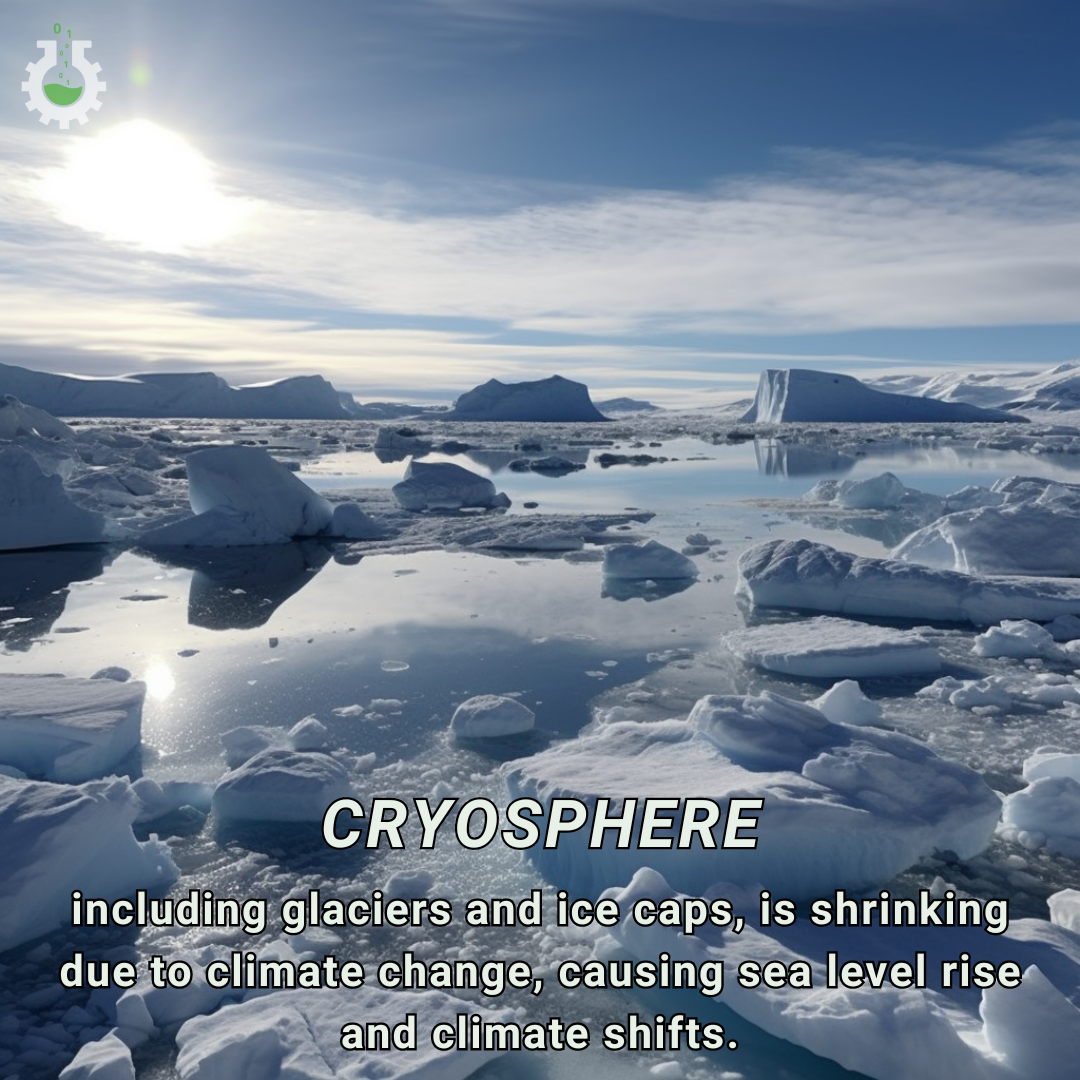July 26, 2024
Climate Change Poster Collection of the Day – Cryosphere
Book a Demo
Today’s Climate Change Poster Collection focus on Cryosphere, derived from the Greek word “kryos” meaning cold or frost, refers to the portions of Earth’s surface where water is in its solid form, including glaciers, ice caps, ice sheets, sea ice, snow cover, and permafrost. This frozen frontier spans across the polar regions, high mountain ranges, and even extends to seasonal ice and snow in temperate zones. The cryosphere is a critical component of the Earth’s climate system, acting as both a climate indicator and a driver of climatic processes. Its vast, icy expanses are not only visually stunning but also play a vital role in regulating global temperatures, sea levels, and atmospheric circulation patterns.
As global temperatures rise due to increased greenhouse gas emissions, the cryosphere is undergoing unprecedented transformations with profound implications for both the environment and human societies. One of the most visible impacts of climate change on the cryosphere is the accelerated melting of glaciers and ice sheets. These massive ice bodies, found in regions like Greenland and Antarctica, hold significant amounts of the world’s freshwater. As they melt, they contribute to rising sea levels, which threaten coastal communities and low-lying islands with submersion and increased vulnerability to storm surges. This phenomenon not only endangers human settlements but also disrupts marine and coastal ecosystems.
Another critical aspect of the cryosphere is sea ice, particularly in the Arctic. The loss of sea ice reduces the albedo effect, where bright ice surfaces that reflect sunlight are replaced by darker ocean waters that absorb more heat. This shift accelerates global warming in a feedback loop, leading to further ice melt and temperature increases. The diminishing sea ice also impacts weather patterns, potentially altering the jet stream and leading to more extreme weather events in the Northern Hemisphere.
Thawing permafrost, which is permanently frozen ground found in high-latitude regions, poses another significant challenge. As permafrost thaws, it releases trapped methane, a potent greenhouse gas, exacerbating the greenhouse effect and potentially triggering more rapid climate shifts. This release of methane not only accelerates warming but also poses risks to infrastructure in permafrost regions, as the ground becomes unstable.
Changes in the cryosphere also disrupt ecosystems, affecting species that depend on ice-covered habitats. Polar bears, seals, and penguins are among the many species facing habitat loss and changes in food availability due to shrinking ice. Additionally, the melting of glaciers and snow cover alters freshwater supplies for millions of people who rely on glacial meltwater for drinking, agriculture, and hydropower. This poses significant challenges for water resource management and food security in regions dependent on glacial runoff.
The scientific community is increasingly focused on understanding these dynamics, as the cryosphere’s response to climate change is both a harbinger of future conditions and a critical component of the Earth’s climate system. Advanced satellite monitoring, field research, and climate modeling are essential tools in studying these changes and predicting their future impacts. Addressing the challenges posed by a changing cryosphere requires global cooperation, robust scientific research, and proactive adaptation and mitigation strategies to protect vulnerable communities and preserve the delicate balance of our planet’s climate.
The cryosphere is an integral part of our planet’s climate system, and its rapid changes due to global warming have far-reaching consequences. From rising sea levels and altered weather patterns to disrupted ecosystems and freshwater supplies, the impacts of a changing cryosphere are profound and multifaceted. It is imperative that we continue to advance our understanding of these processes and take decisive action to mitigate climate change, ensuring a sustainable future for all.
Discover an inspiring collection of climate change poster.



